Discover 19 Places to Visit in Gwalior: Top Attractions
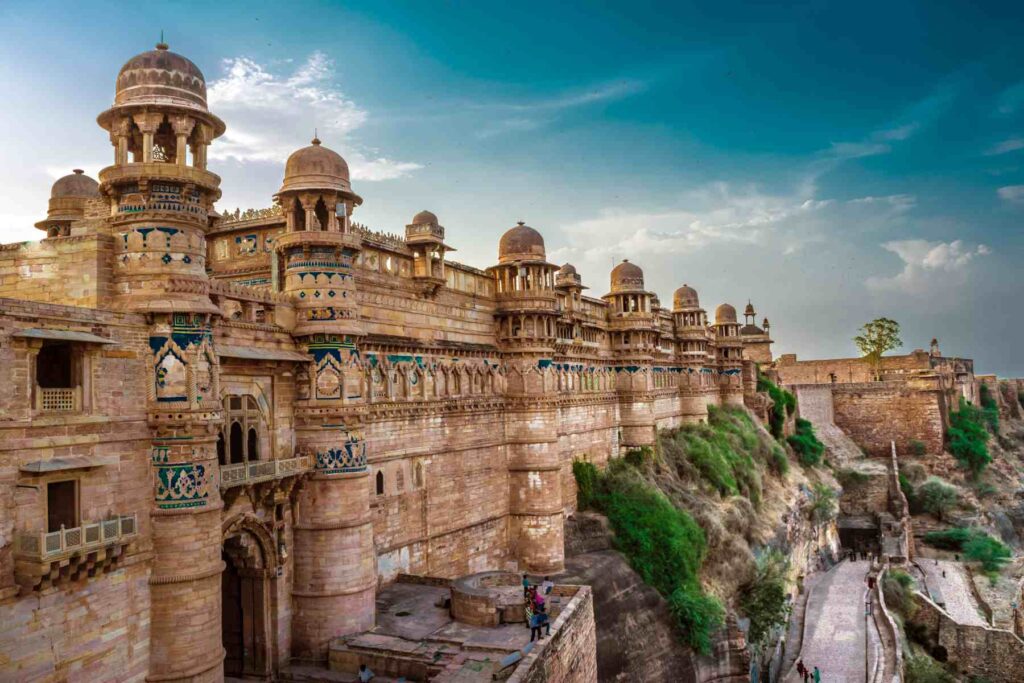
Once ruled by the Sindhia dynasty, Gwalior was named in the Guinness Book of World Records for the largest indoor mural. When thinking of exploring places to visit in Gwalior, the Sun Temple, Gwalior Fort, and Gujari Mahal will attract you with their historical significance and architectural beauty.
You will witness European architecture at Jai Vilas Palace and can feel the bravery at Rani Laxmi Bai Samadhi Sthal. This TripzyGo guide will give you beautiful insights into Gwalior tourist attractions. Let’s start exploring the beauty of Gwalior!
Top Places to Visit in Gwalior
- Gwalior Fort
- Jai Vilas Palace
- Sun Temple Gwalior
- Gopachal Jain Parvat
- Gurudwara Data Bandi Chhod Sahib Gwalior
- Teli Temple
- Gujari Mahal
- Tomb of Muhammad Ghaus
- Rani Laxmi Bai Samadhi Sthal
- Gwalior Zoo
- Tomb of Tansen
- Man Mandir Palace
- Bateshwar Group of Temples Morena
- Tighra Dam
- Suraj Kund
- Sas-Bahu Temple
- Madhav National Park
- Motimahal-Heritage Building of Scindia Dynasty
- Italian Garden
The places to visit in Gwalior represent the beauty of Indian culture and rich history. Whether you want to enjoy a historical fort or museum or seek blessings at temples, here is the list of top tourist spots in Gwalior:
Gwalior Fort

Among the historic forts of India, Gwalior Fort is a UNESCO World Heritage Convention. It is known for its stunning blend of Rajput, Mughal, and Jain architecture. It was founded by Raja Sourya Sena in 773 CE; this fortress has witnessed the rise and fall of numerous dynasties, from the Tomars, who created the stunning Man Mandir Palace with its distinctive turquoise tiles, to the Mughals and Marathas, who added their own architectural elements. Its brilliant fusion of Hindu, Muslim, and Jain artistic traditions makes it one of the amazing places to visit in Gwalior.
Jai Vilas Palace
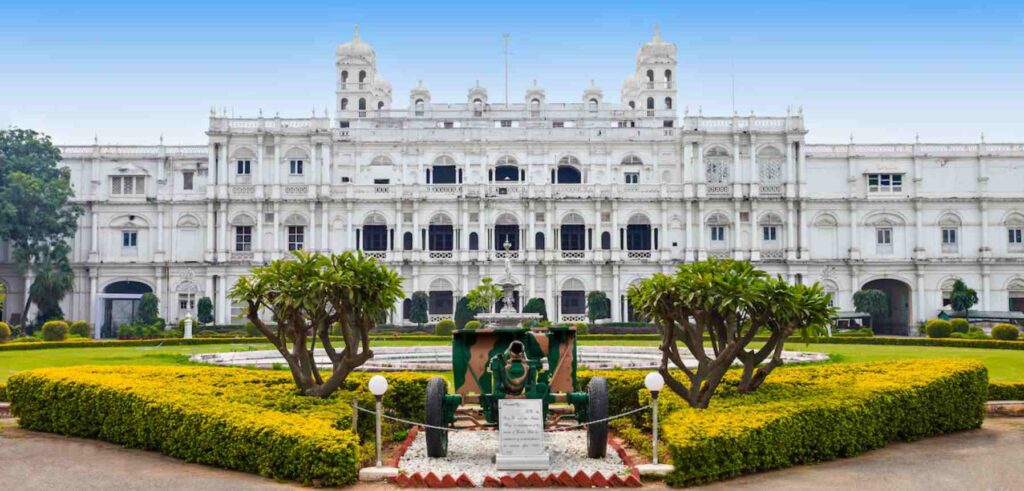
Nestled in the historic city of Gwalior, the grand Jai Vilas Palace captivates visitors with its European-inspired architecture and lavish interiors. Built-in 1874 by Maharaja Jayaji Rao Scindia, this opulent palace showcases Tuscan, Italian-Doric, and Corinthian styles across its three floors. Among the must-see places to visit in Gwalior, it houses enormous crystal chandeliers weighing 3.5 tonnes each, a silver toy train that served delicacies, and a museum displaying royal artifacts. The 400 rooms of the palace reflect colonial elegance with Italian marble flooring and rare antiquities.
Sun Temple Gwalior

The Surya Mandir is one of the enchanting places to visit in Gwalior, blending red sandstone and white marble in stunning harmony. It was constructed in 1988 by industrialist G.D. Birla; this relatively modern shrine draws inspiration from Konark’s legendary Sun Temple. Your eyes will be drawn to the temple’s exterior with its distinctive graduate slots ascending to the peak. While inside, you will encounter the idol of the Sun God.
Gopachal Jain Parvat
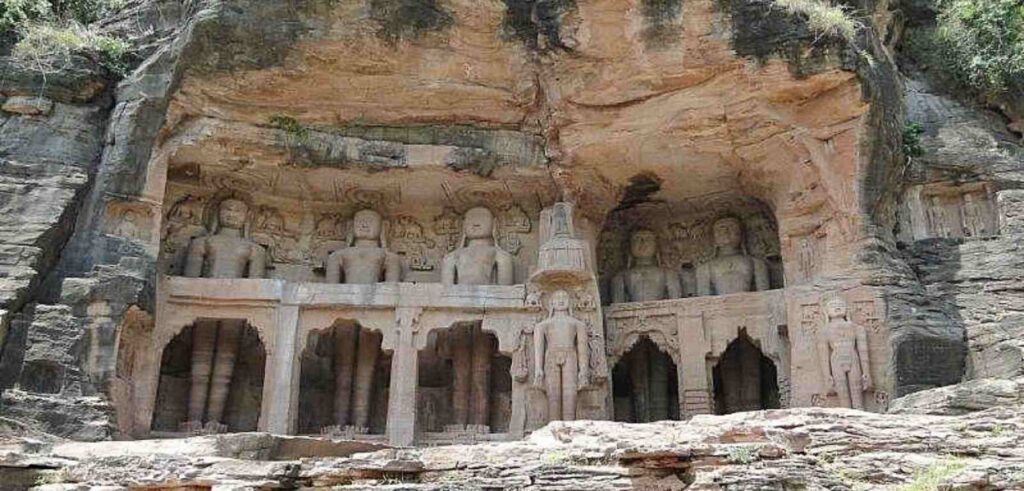
Gopachal Jain Parvat, nestled within the Gwalior Fort, reflects an impressive array of Jain rock-cut sculptures. These carvings, which were assumed to have been made in the 14th and 15th centuries, depict Tirthankaras in both seated Padamasna and standing Kayotsarga postures. The most remarkable is the 14-meter-high idol of Parshvanatha, the tallest of its hind globally. These arts reflect the Tomar kings’ patronage during their reign.
Gurudwara Data Bandi Chhod Sahib Gwalior
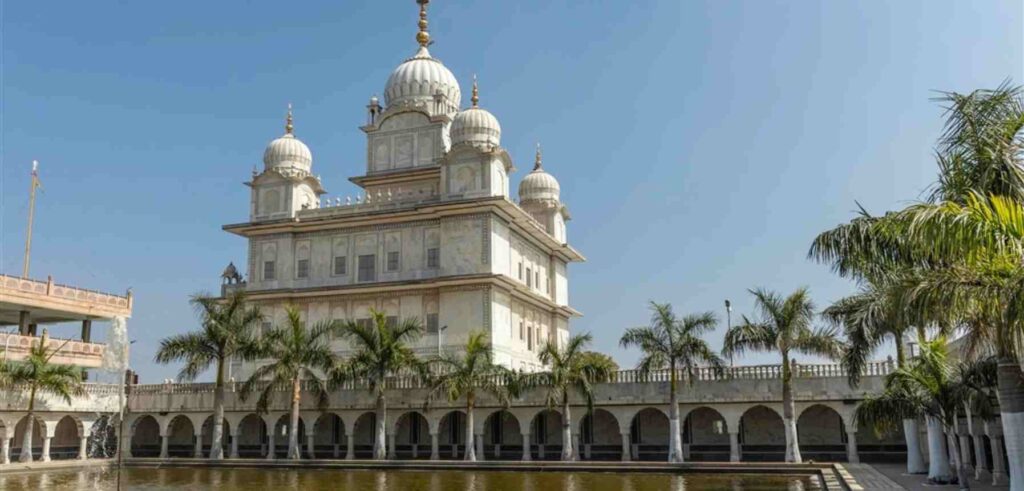
Gurudwara Data Bandi Chhor Sahib is a beautiful spot for anyone exploring places in Gwalior. This sacred place honors the bravery and compassion of Guru Hargobind Sahib Ji, who freed himself and 52 Hindu princes from imprisonment. The story behind the Gurudwara is deeply moving and connects you to a significant chapter in Sikh history. The peaceful surroundings and the architecture make it a serene place for reflection and prayer.
Teli Temple
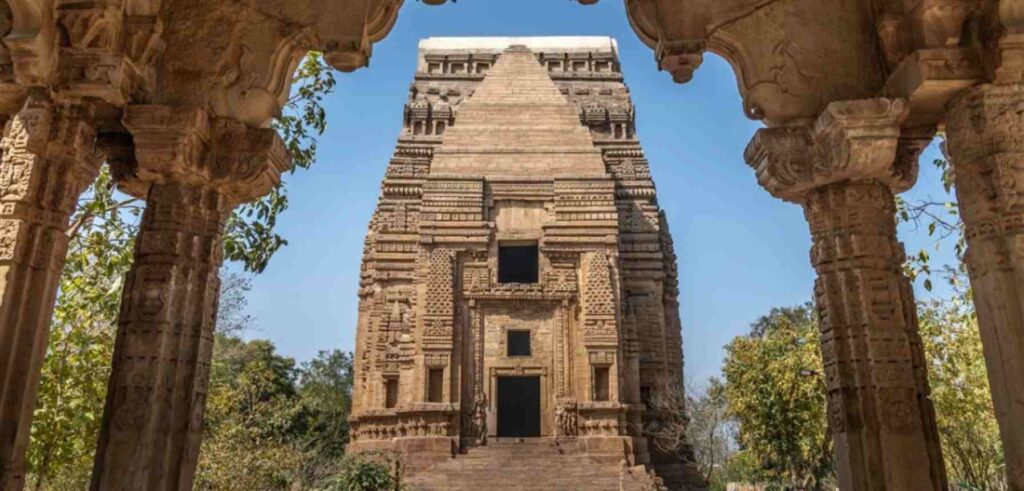
Teli Ka Mandir, located within the historic Gwalior Fort, is a 9th-century temple dedicated to Lord Vishnu. Its unique architecture blends Dravidian and Indo-Aryan styles with a towering roof and intricate carvings. Built during King Mihir Bhoja’s reign, the temple reflects Gwalior’s rich heritage and is a must-see for anyone exploring places to see in Gwalior.
Gujari Mahal
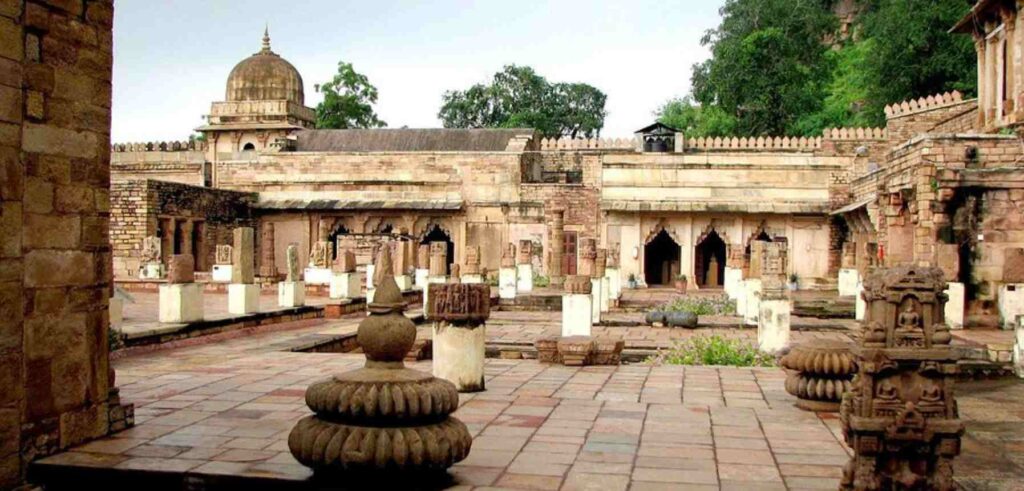
Gujri Mahal stands as a movement of eternal and pure love. Raj Man Singh built it for his beloved Gujar queen, Mrignayani. This 15th-century palace has now turned into a museum that houses exquisite sculptures and ancient artifacts. Its romantic origin story and architectural splendor make it one of the most enchanting places for couples to visit Gwalior. It would be perfect for lovers who seek a romantic walk through corridors where love and history intertwine.
Tomb of Muhammad Ghaus
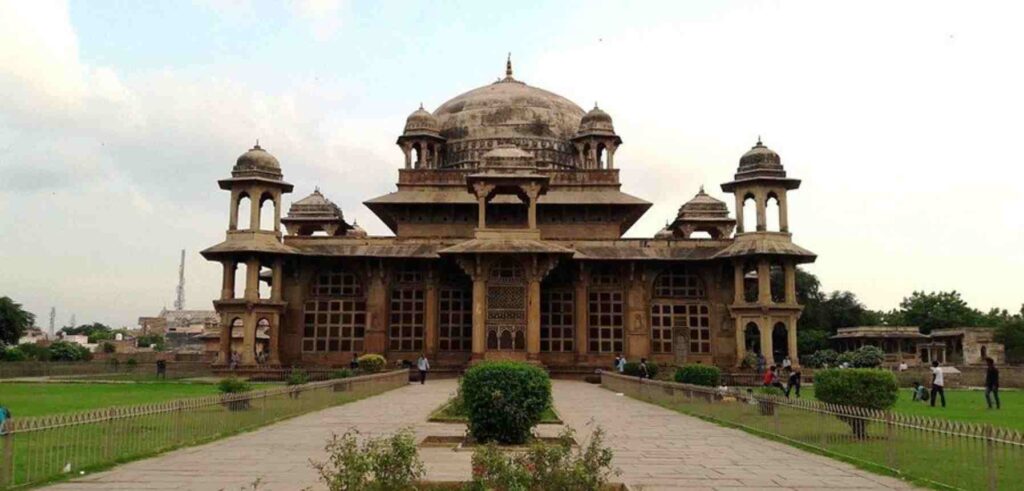
Located in Tansen Nagar, the Mohammad Ghaus Tomb stands as a serene oasis in the bustling city. This 16th-century mausoleum is dedicated to the renowned Sufi saint and musician. Its intricate stone latticework, majestic central dome, and tranquil garden setting will attract you. It is a peaceful retreat where history breathes through Mughal architecture, making it an essential stop on any Gwalior sightseeing places itinerary.
Rani Laxmi Bai Samadhi Sathal

Rani Lakshmi Bai Smadhi Sathal is a place where you will feel proud to be Indian and get a sense of pride. Located in Phool Bagh, Rani Laxmi Bai’s Samadhi honors the legendary warrior queen who defied the British Empire. Her eight-meter-tall metallic statue rises majestically amid lush gardens, commemorating her extraordinary valor. This hallowed ground transforms annually on June 18th, when celebratory fairs bring the heroine’s indomitable spirit to life, making it a poignant pilgrimage for visitors to Gwalior.
Gwalior Zoo

Nestled within the historic Phool Bagh, Gwalior Zoo offers families a delightful wildlife experience in the heart of the city. Established by the Scindia royal family in 1922, this 8-hectare sanctuary houses rare treasures, including golden pheasants, sambhar, bison, and the majestic white tiger. Children’s eyes light up as they watch black bucks leap, crocodiles bask in the sun, and parents appreciate the well-maintained grounds and protected environment. As one of the 5 best places to visit in Gwalior, this century-old zoo provides a perfect family outing where urban life meets natural wonder.
Tomb of Tansen
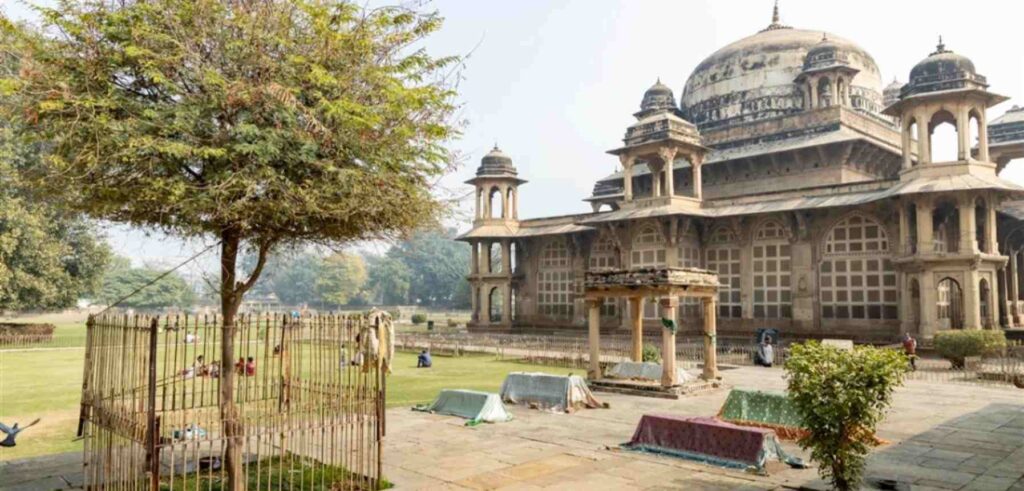
The Tomb of Mohammad Ghaus, one of the most beautiful places to see in Gwalior, showcases Mughal architecture with its intricate latticework and blue-tiled dome. Built during Akbar’s reign, this 16th-century marvel honors the influential Sufi saint who guided emperors Babur and Humayun. Nearby rests Tansen’s tomb, where the annual music festival transforms this serene garden sanctuary into a living celebration of India’s classical heritage.
Man Mandir Palace
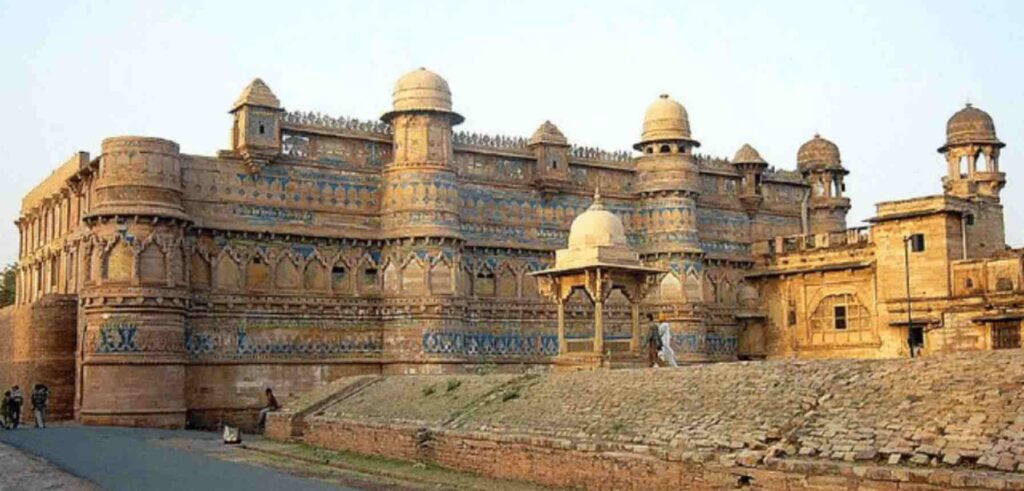
Sitting at the northeast corner of Gwalior Fort, Man Mandir Palace shows off the beautiful art of long ago. Built by Raja Man Singh Tomar between 1486 and 1516, this palace has many levels with bright turquoise and yellow tiles, pretty flower designs, and lovely stone screens. Under the palace are secret rooms that were once used as prisons, where many sad stories took place. With its open courts and royal living areas, Man Mandir Palace is one of the most interesting places to visit in Gwalior.
Bateshwar Group of Temple Morena
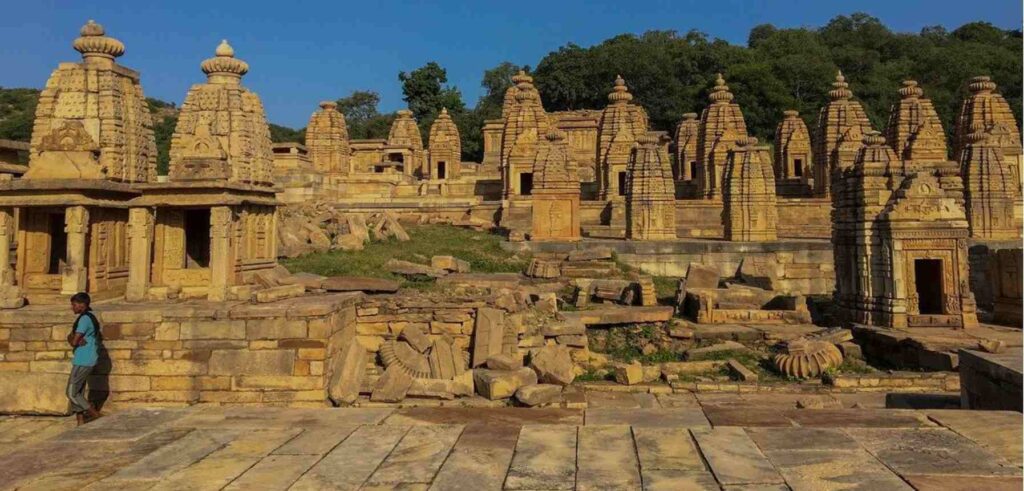
Hidden among Padavali village, the Bateshwar temple group showcases nearly 200 sandstone temples built between the 8th and 11th centuries. This remarkable Gwalior tourist attraction features intricate carvings, unique mortar-free construction, and a fascinating restoration story involving former dacoits. The temples display beautiful depictions of deities, musicians, and everyday scenes, making this forgotten complex a peaceful, authentic glimpse into medieval India’s artistic brilliance.
Tighra Dam
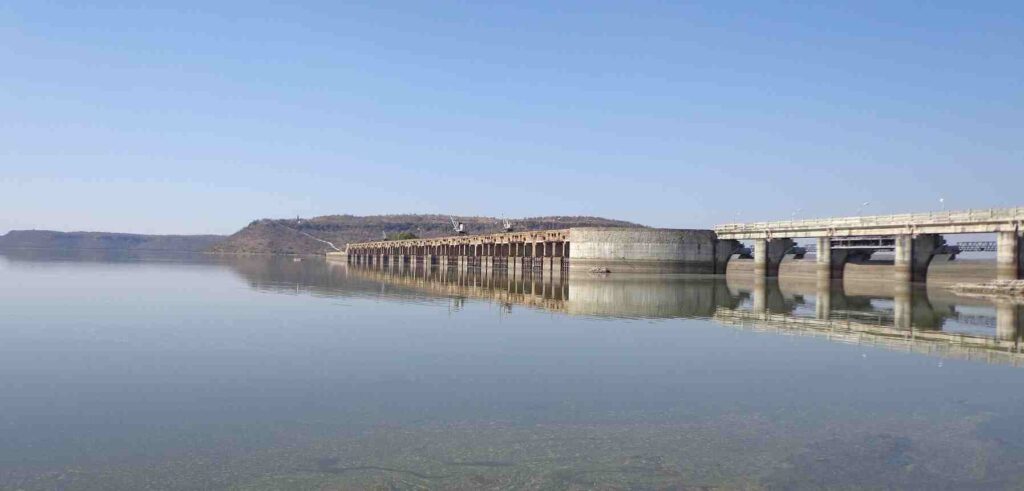
Just 20km from the city, Tighra Dam offers a refreshing escape among Gwalior sightseeing places. Built in 1916, this engineering marvel now serves as both a water reservoir and a recreation spot. Visitors can enjoy thrilling speedboat rides, paddle boating, and water scooters through the “Winds and Waves” boating club. The peaceful waters, home to diverse fish and birds, make it a perfect family destination for both adventure and relaxation.
Suraj Kund

Nestled within Gwalior Fort, Suraj Kund is a mystical tank with legendary healing powers. According to local lore, this 15th-century reservoir cured Prince Suraj Sen of leprosy, inspiring him to establish Gwalior city. Visitors exploring Gwalior sightseeing places can experience the tank’s serene atmosphere, marvel at captivating sunrises and sunsets, and soak in the spiritual energy that has drawn pilgrims for centuries.
Sas-Bahu Temple
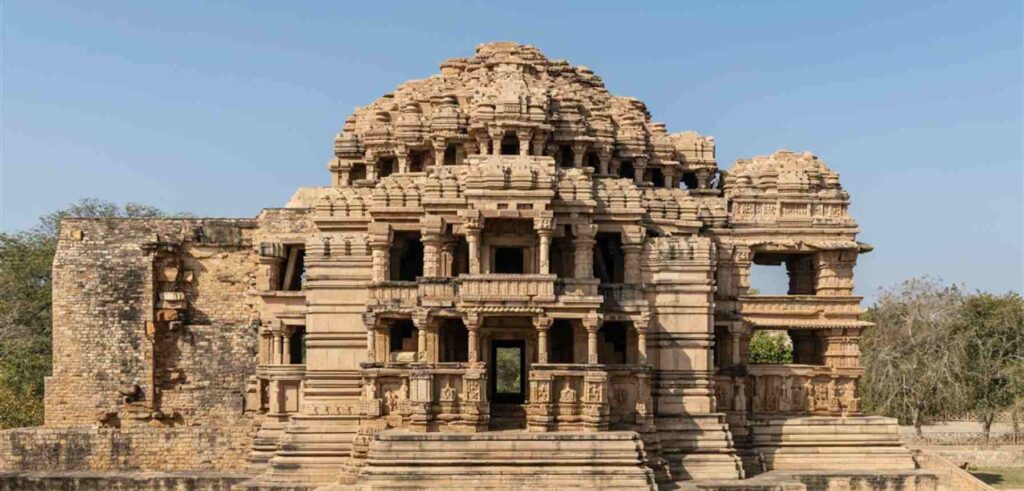
The Sas-Bahu Temple, located within the Gwalior Fort, is a historical site reflecting ancient architectural brilliance. The larger temple represents a mother-in-law (Sas), while the smaller one symbolizes a daughter-in-law (Bahu), highlighting their eternal bond. This temple is a significant spot among the must-see places to visit in Gwalior.
Madhav National Park
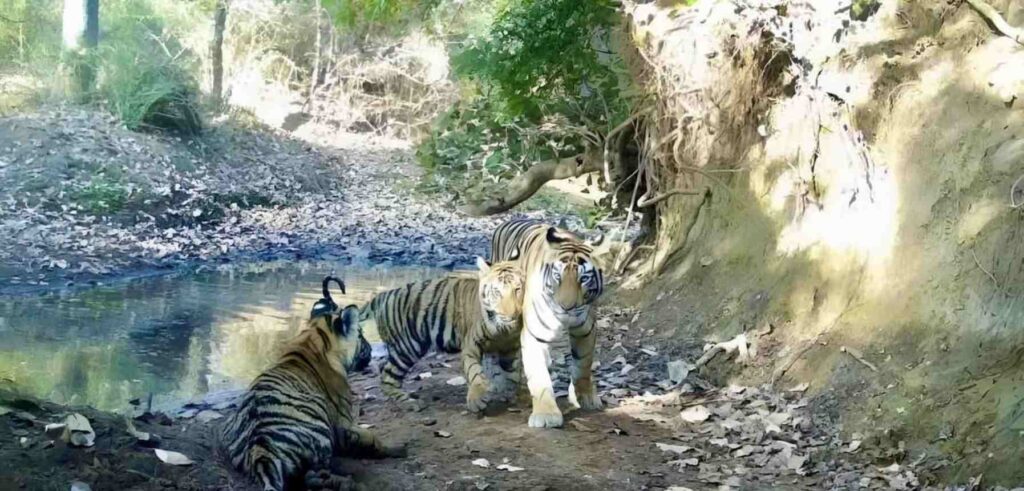
Madhav National Park, located near Shivpuri in Madhya Pradesh, is one of the National Parks to visit for a wildlife experience. Visitors can explore diverse ecosystems, including forests, lakes, and meadows. The park is home to various wildlife species, such as chinkara, sambar, and leopards. Additionally, the Sakhya Sagar Lake offers opportunities for boating and birdwatching, making it a must-visit destination among tourist spots in Gwalior.
Motimahal-Heritage Building of Scindia Dynasty
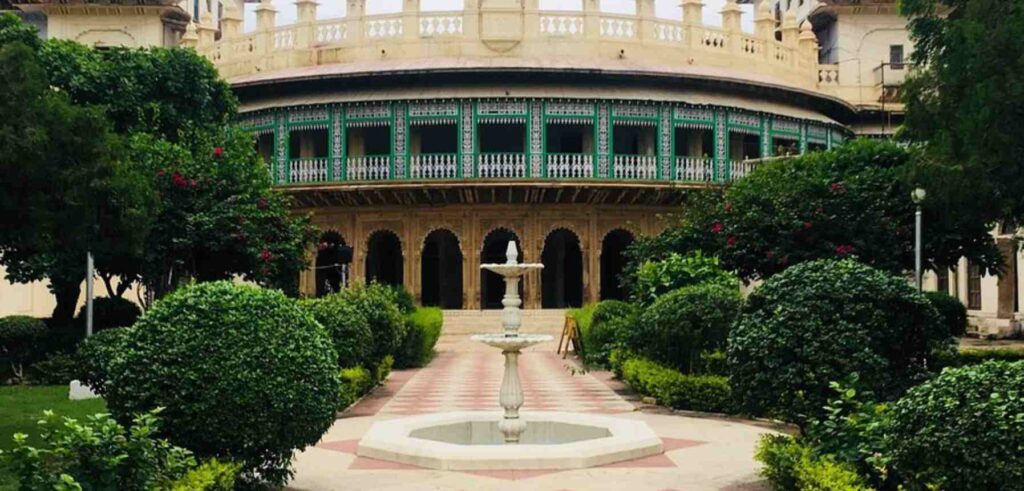
Motimahal, located in Gwalior, India, is a heritage building that once served as the office complex of the Scindia State. Constructed in the 19th century, it showcases exquisite wall paintings, mosaic work, and unique architecture.
Visitors can explore its over 300 rooms, adorned with murals depicting ragas and origins of Indian classical music, Hindu mythology, and scenes from royal courts. The interior features delicate tempera colors and intricate mosaic designs using colored glass.
Currently, Motimahal houses various state government offices but remains open to the public from Monday to Saturday, 11:00 AM to 5:00 PM. A visit here offers a glimpse into the rich heritage of the Scindia dynasty, making it a notable addition to the list of tourist spots in Gwalior.
Italian Garden
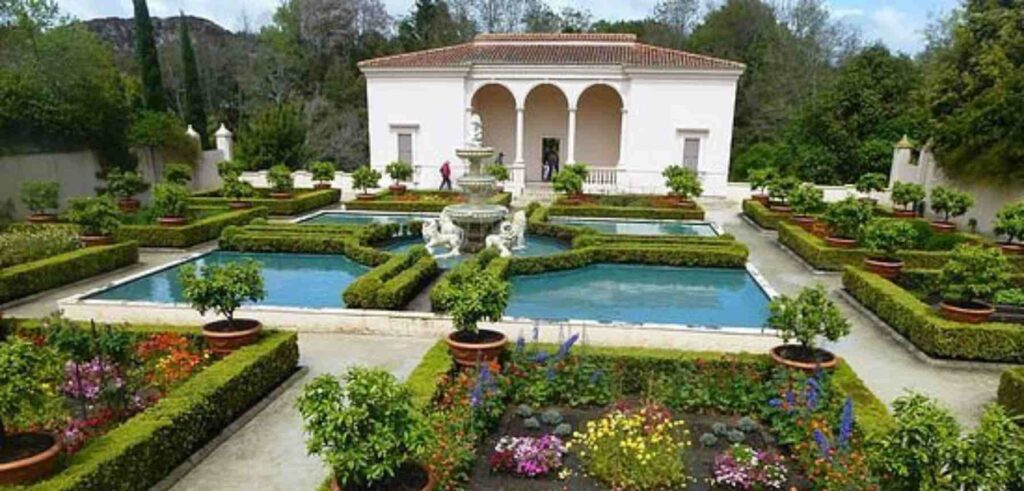
The Italian Garden in Gwalior, adjacent to the Gwalior Zoo in the Phool Bagh area, is a serene retreat reflecting 19th-century Italian design. It has lush greenery, fountains, and a tranquil pool that make it one of the national parks to visit for wildlife tourism. You can also enjoy boating in the pool, enhancing the park’s charm. Open daily from 6:00 AM to 6:00 PM, it’s among the notable tourist spots in Gwalior.
Best Time to Visit Gwalior Tourist Attractions
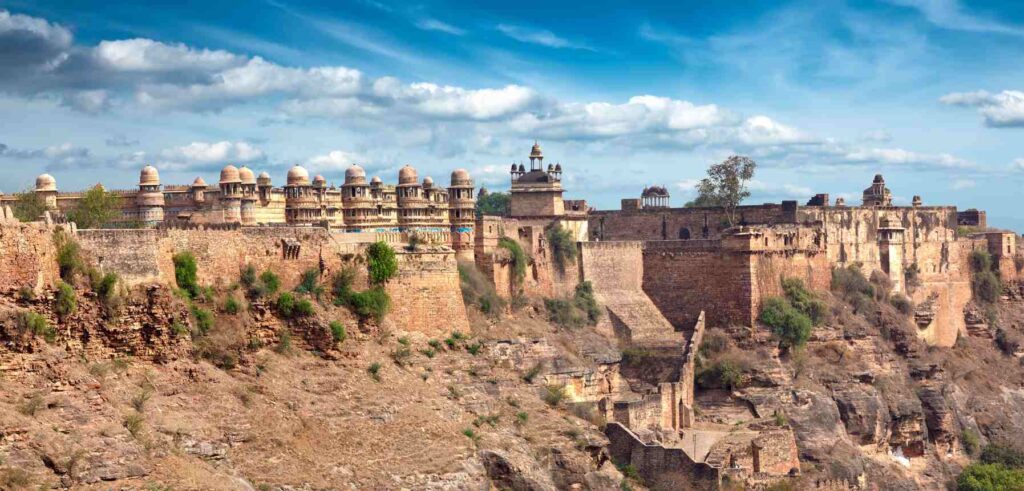
Visiting Gwalior between October and March offers a delightful experience. The winter months bring cool, comfortable temperatures, which are ideal for exploring the city’s rich history and architecture. This period also coincides with cultural events like the Tansen Music Festival in December, enriching your travel experience.
How to Reach Gwalior
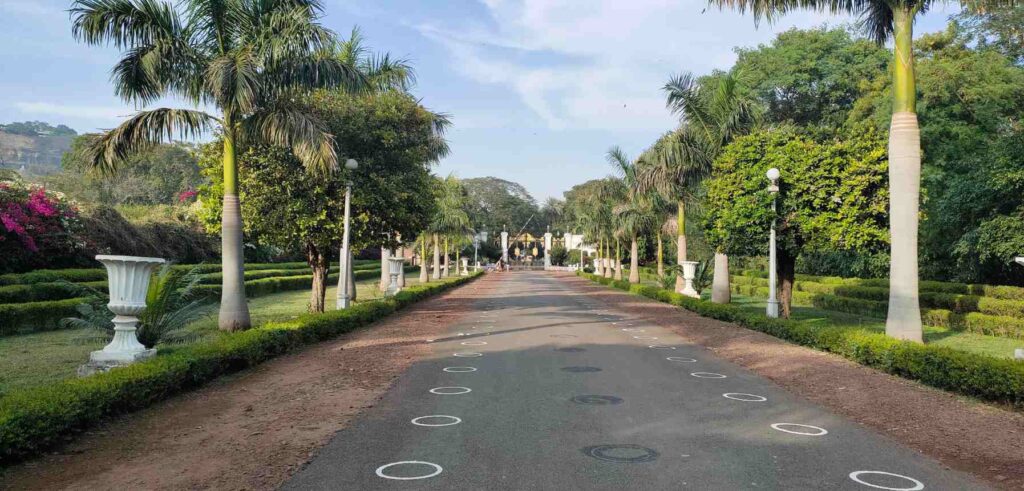
Gwalior, located in Madhya Pradesh, India, is accessible via air, rail, and road:
By Air
- Nearest Airport: Rajmata Vijayaraje Scindia Airport (Gwalior Airport), approximately 10 km northeast of the city center.
- Connectivity: Regular domestic flights connect Gwalior to major cities like Delhi, Mumbai, Indore, and Bhopal. Airlines such as Air India operate these routes.
By Rail
- Central Station: Gwalior Junction Railway Station, situated on Racecourse Road.
- Connectivity: Direct trains link Gwalior to various cities, including New Delhi, Mumbai, Ahmedabad, and Chennai, making it a well-connected rail hub.
By Road
- Road Links: Gwalior is well-connected by road to neighboring cities and towns. It is approximately 118 km from Agra, 321 km from Delhi, and 423 km from Bhopal.
- Transportation: Regular bus services and well-maintained highways facilitate easy road travel to and from Gwalior.
Explore Places to Visit in Gwalior with TripzyGo
Gwalior is a treasure of history, culture, and architectural marvels, from the grandeur of Gwalior Fort to the peaceful surroundings of Gurudwara Data Bandi Chhor Sahib. Whether you’re admiring the intricate designs of temples or exploring royal palaces, Gwalior offers something for every traveler. Plan your visit with TripzyGo for a seamless and enriching experience of these top Gwalior tourist attractions.

